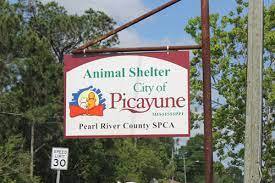Another storm season begins
Published 9:46 pm Saturday, May 31, 2008
After Hurricane Katrina struck the upper Gulf Coast in 2005, even grizzled storm veterans became edgy when the opening of hurricane season rolled around.
Blue tarps covering Katrina-damaged homes are far fewer now, but as the third storm season since Katrina arrives — the six-month hurricane period begins Sunday — there’s a new reason for concern: The upper Gulf of Mexico has been spared a hit all three years.
Is the region due?
“About every four or five years, we get one,” said 61-year-old Charles Williams of Irvington, Ala., who works on a boat in neighboring Moss Point, Miss.
Whether his estimate is right or not, storm experts say the frequency of hurricanes has clearly been on an upswing.
“We entered into an increased period of activity in 1995 and should see above average seasons — 10 storms or more — for the next 20 years,” said Alabama Emergency Management Agency Director Brock Long. “More activity means a higher probability of getting hit with a major category hurricane.”
Long said it does not matter to his agency how many storms are predicted.
“It only takes one to make landfall and create a disaster,” he said.
Compounding emergency planning this year is the price of gas.
James Allday, 54, of Pascagoula, Miss., whose home had eight feet of water during Katrina, said with prices so high he expects people will be concerned about getting caught in bumper-to-bumper traffic.
Anticipating that many will not want to evacuate, emergency officials in Mobile and Baldwin counties on the Alabama coast are planning for more shelter space.
But not everyone will be sticking around if a major storm builds in the Gulf of Mexico.
“Be safe and leave,” said Allday. “If one does come out in the Gulf, go ahead and leave.”
“I think you have to have advance planning to get gone,” said Deborah Flannagan of Irvington, who rounds up a family of 10 when a hurricane approaches. “We all get together and make sure we know where everybody will be. It’s like a drill. You can’t take anything for granted.”
Wayne Lee’s large grocery market in Pascagoula stayed open during Katrina. He said it was “like an island” surrounded by flooded homes.
Lee said he keeps up with hurricanes on his computer, monitoring NOAA forecasts. His grocery wholesaler prepares hurricanes supplies for the store that can be delivered should the city be threatened.
“That’s all I can do. I’m not a meteorologist,” he said.
Moss Point contractor Joey Pettey, 34, said Katrina, which demolished miles of Mississippi beachfront, “opened a lot of people’s eyes about when you do need to leave.”
He added: “Upper-class people can afford to leave. Lower-class people, they are stuck. It’s just a mess in the shelters.”
Kenny Schmidt, 53, who lives on a 37-foot sailboat docked at Harbor City Harbor Marina in Moss Point, manages the marina on the Escatawba River. He said those who say they rode out a hurricane on their boat “will never do it again.”
Bob Cunningham Sr., 60, of Moss Point, said he will stick around. He was holed up in a motel during Katrina.
“I stock up on canned goods and lots of water. I listen to the news. There are lots of places you can go to shelter,” said Cunningham. “All I do is keep the good Lord with me.”




